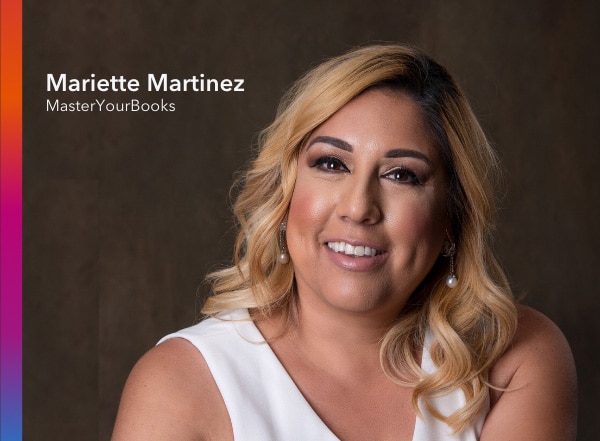A: If you offer distinctly different products or services that serve distinctively different audiences, it might be time to create individual brands. Doing so will allow each brand to cater to an individual audience—personalizing the experience and, hopefully, generating more leads.
But there is a downside. In this scenario, each individual brand needs its own marketing budget, market position, and customer segment. With each brand you create, your marketing efforts double. You have to consider the capacity of your marketing team when you make this decision.
Additionally, creating individual brands can cause confusion in the marketplace and for your customers. Individual brands often don’t get to benefit from the parent brand’s success or awareness. If your customers have come to know and love The Landscaping People, that love and awareness might not transfer to a new brand.
So, before you decide to create additional brands, ask yourself if these activities truly target vastly different audiences, or if there’s an underlying vision or purpose echoed throughout (in your case, fulfilling landscaping needs). If your target audience for each activity isn’t distinctly different, or if the underlying purpose of each activity aligns with the purpose of your company, keeping these activities under one brand might be your best bet.
You can always consider “sub-branding” to differentiate your services. Think “Uber,” “Uber Eats,” and “Uber Freight.” Each sub-brand offers a different service and caters to a different clientele, but all are recognizable under the parent name, Uber.
Q: “I am a one-person business. I struggle with ‘doing it all.’ How do I manage everything as one person?”
— Janet A., New York
A: As a “solo-preneur,” you wear all the hats. And that many hats can get pretty heavy. At the end of the day, the only way to alleviate the load is to get some help. Maybe you’re not ready to hire an employee, but that doesn’t mean you have to do it all alone.
Make a list of the things you’d like to get off your plate. Things like “bookkeeping” or “marketing” might land on that list—and that’s okay! After all, you started your business to follow your dreams, not to spend all your time in the books. You can outsource these tasks out to a bookkeeper, a freelancer or contractor, or an agency. Sure, it’ll cost you, but you’ll gain more time to do what you do best: grow your business.
In the meantime, automate. If you’re still manually entering transactions, using spreadsheets, paying bills, emailing customers, or fulfilling orders, it’s time to automate. Use accounting software to automate your bookkeeping, invoicing, and bill payments. Use email software to streamline your marketing and communications. Use forms and templates to collect information from customers. Modern technology eliminates the need for business owners to spend time on menial tasks.
Q: “How do I become a better closer?”
— Rocío F., Nevada
A: No matter what type of business you’re in, you have to make sales if you want to make a profit. Of course, closing the deal is easier said than done. Customers can be demanding or hesitant, and negative negotiations can have lasting effects on your business.
The best thing you can do is provide outstanding customer service from the get-go. Treat your buyers with courtesy and respect—even if you’re frustrated or in a hurry. Radiate professionalism. And be willing to go the extra mile.
Beyond that, there are a few things you can do to make your “deal” a little more enticing. Offer special discounts to first-time customers and referrals. Advertise a free gift with every purchase. Make the closing process as easy and seamless as possible to avoid common pain points. And, finally, don’t take it personally if you don’t close the deal. If the interaction was positive, they’ll be back.
Q: “At what stage in your business should you hire an accountant to assist with bookkeeping?”
— Regina W., Virginia
A: Most small business owners start their journey handling accounting tasks on their own. As your business grows, you might decide to hand off the day-to-day transaction input to a bookkeeper. Eventually, your business will require the expertise of an accountant. At the end of the day, business owners want to build their businesses, not manage their books.
That being said, every journey is different. Only you will know when it’s time to bring in extra help. There are a few signs that may indicate the time has come. If preparing and paying taxes is causing you stress, an accountant can help. If you’re losing control of your finances or spending more time in the books than on your business, it might be time to bring in a bookkeeper. As a rule of thumb, if you’re feeling in over your head when it comes to the financial side of running your business, it’s a good idea to get some help.
When looking for an accountant or bookkeeper , it’s important to know the difference between the two. Bookkeepers benefit your business by freeing up time in your schedule, minimizing financial errors, and generating accurate financial statements. An accountant might oversee a bookkeeper’s work, or they might offer their own bookkeeping services. Accountants act as valued financial advisors who can help you with financial planning, business decisions, taxes, and more.
Q: “How important would you say it is to incorporate a podcast into a business?”
— Chrissy P., Arizona
A: It seems like everyone and their uncle has a podcast these days. And, yes, podcasts can be a really powerful way to share your story and market your business. After all, 57% of US consumers say they listened to a podcast in 2021. It’s a real advantage when you walk into a meeting and the client already feels like they know you because they’ve been hearing your voice in their earphones every week.
But before you run out and buy a microphone, it’s important to understand WHY you should produce a podcast and WHAT you want to share with your audience. There are already a lot of podcasts about succeeding in business (we’re talking thousands)—so how does your podcast stand apart?
Due to their audio-only style, podcasts are a cost-effective and simple marketing tool compared to videos and graphic design. But there are a few caveats. You need to make sure you have the bandwidth to not only launch your podcast but produce multiple episodes on a scheduled basis. As with any marketing material that has your company’s name on it, you want to make sure the podcast represents your brand both in production and editorial quality. As you build your listenership, you might need to spend some marketing money to promote your podcast, which can conflict with marketing your actual business. You’ll want to make sure your podcast is strong enough to support those marketing dollars.
Finally, keep in mind that most podcasts don’t actually make any money. And it can be difficult and time-intensive to build a following. Your time might be better spent advertising your business as a guest on an established podcast.
Q: “How should bookkeepers encourage small businesses to adopt environmental, social, and governance (ESG) methodologies while growing their businesses?”
— Yosniel R., Florida
A: Building a sustainable brand isn’t just good for the environment, it’s good for business. Today’s consumers care about the planet—and they want the businesses they support to care too.
The majority (81%) of consumers say that trusting brands to “do what is right” is a top buying criteria. Another 73% of consumers say they’re willing to change their consumption habits to lessen their negative impact on the environment. And sales of sustainably marketed products grew 5.6x faster than conventionally-marketed products from 2013-2018.
Plus, businesses that seek to improve themselves, their community, and the planet gain a competitive advantage by improving efficiency, reducing operating costs, and building a strong brand reputation.
Q: “How can I become better at pricing our services?”
— Gilbert B., Colorado
A: Choosing the right pricing strategy is make or break for your business. Price your products and services too low and you’ll feel it in your profit margins. Set your prices too high and potential buyers will flock to your competition instead. Then again, if you don’t price your services high enough people will question the quality of your work. It’s a complicated web—to get it right, it’s critical to use your financial reporting and insights to guide your decision.
Beyond that, choosing the right pricing strategy depends on a number of things including marketing conditions, competitor pricing, your customers’ ability to pay, and production and distribution costs. At the end of the day, you need to know what it costs to produce your products and provide your services. And you need to continuously monitor these costs so you can react quickly to changes and maintain long-term profitability. If you’re feeling overwhelmed with these decisions, an accountant can help.
Q: “What is the best piece of advice you can give a small business owner who is trying to create a healthy work-life balance?”
— Sara M., Wyoming
A: As Intuit EVP, Alex Chriss, would say, “the most important resource for any business is YOU.” You have to protect your time. After all, you only get 24 hours a day—at least six of those hours should be reserved for you to live your life (and, no, you can’t use those hours to sleep).
It’s easy to talk the talk, but how can a busy new business owner actually walk the walk? Unfortunately, there is no magic spell to create more time or less work. It’s up to you to draw the line between work and life.
Start by practicing the word “no.” Cut or delegate the tasks that aren’t essential to your to-do list. Set manageable goals for yourself each day and be efficient with your time. Take breaks while you’re on the job and listen to your favorite music or podcast while you work—these things actually foster productivity.
When you get home, unplug. Just because you can work from everywhere doesn’t mean you should. Focus on the activities that bring you joy. Spend time with friends and family. And treat your body with kindness.
Finally, don’t be afraid to seek help when you need it. If you’re consistently overwhelmed by work or life, talk to a mental health professional or trusted advisor to help carry the load. Above all, remember: When you take care of yourself, you take care of your business.
Q: “I just want Pitbull to sing to me!”
— Lynda A., Florida
A: Us too!













